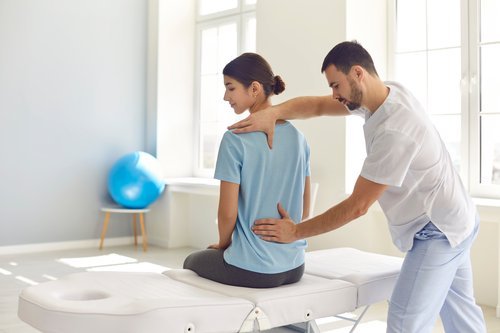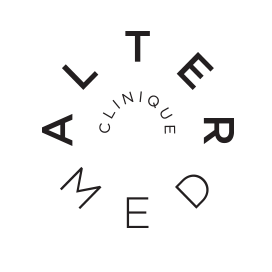Didier Gall
Montreal masso-kinesitherapy
ANALYTICAL PHYSIOTHERAPY OR MICRO-PHYSIOTHERAPY
xx
In physiotherapy, we treat through movement: it is in essence a dynamic therapy and the current biomechanics show us certain aspects of joint mobility. If we take a closer look at these joints, we realize that the movements are more complex than they seem.
Definition and scope of Micro-Kinesitherapy
Micro-Kinesitherapy, also known as analytical kinesitherapy (Sohier technique), includes specific examinations and techniques that require a high degree of manual dexterity.
It is indicated for the prevention and treatment of osteoarticular affections of traumatic, microtraumatic, functional or postural origin.
Here are some examples:
non-systemic inflammatory pathologies (tenopathy, tenosynovitis, arthritis, periarthritis, osteochondritis...)
degenerative dystrophic pathologies (arthrosis, algodystrophy...)
articular and abarticular traumas (dislocations, articular fractures, tendon ruptures...)
orthopedic pathologies (scoliosis, hyper kyphosis of the back, varus valgus of the knee, surgical sequelae...)
Fundamental justifications
We can only really treat a joint if we have the potential to restore the biological balance of the damaged or diseased tissues.
If not, we do not address the primary problem that disrupted the physiology of the joint and periarticular tissues.
Analytical physiotherapy aims to normalize the physical environment of the tissues in order to optimize their biological potential.
In this perspective, the recovery of a normal articular kinematics is the first priority.
It has indeed for consequences :
Balancing capsulo-ligamentary tensions and therefore, mechanoreception,
To reduce excess musculo-tendinous tension by stretching
To remove contractures of the stabilizing muscles
To reduce nociception (pain), and consequently
To reduce vaso-motor imbalances
To improve the functional performance*.
To recover the initial programs of motor automatisms, disturbed by antalgic behaviors**.
xx
Apart from trauma, repeated micro-trauma (sports), postural disorders and capsulo-ligamentary retractions, it is the functional predominance that is responsible for kinematic disorders, also called decentrations. These decentrations, dynamic at first, end up being objectified at rest by medical imaging. It is then often, therapeutically speaking, quite late, because the pathology is structured. Fortunately, our selective/significant examinations make it possible to highlight them at the functional stage of the condition.
Typical treatment proposed
First step: treatment with specific mobilizations
We begin our treatments with specific mobilizations aimed at freeing the joint space from its jamming and decentering in the three planes of space.
These are gentle, progressive mobilizations, tangential to the joint surfaces and performed from initial positions that do not put tension on the periarticular soft tissues.
When recentering is achieved, functional constraints (forces that pass through the joint space: compression-decompression, rolling-sliding, shearing) can "express themselves freely", i.e. create an ideal physical environment, capable of correctly stimulating the genetic potential for cell renewal.
This is confirmed by the studies of mechano-biologists on cartilage.
As this structure is neither innervated nor vascularized, the metabolism of the chondrocytes depends essentially on the biomechanical, biogenic quality of the forces passing through it (La mécanobiologie. The Movement Observatory. Newsletter Sept. 2004 N°13).
Second stage: treatment by adjuvant techniques
It is at this stage of the treatment that adjuvant techniques, with an anti-inflammatory and analgesic aim, are added: rest, advice on lifestyle, specific exercises, etc.)
Mechano-biologists also insist on the obligatory cyclic nature of the distribution of forces to correspond to the normal physiology of chondrocytes: The constancy of support deteriorates the cartilage.
It is easy to extrapolate and imagine the importance of the cyclical nature of the stresses on poorly vascularized tendon areas.
To the alternation of support is added the alternation of contractions and relaxations (absence of contracture) so that the articular and periarticular tissues come together or separate under good conditions.
Functionally, this cyclic character corresponds to what Sohier calls the "Fundamental Biological Rhythm (FBR)" (Sohier R. Le rythme biomécanique fondamental justifie la kinésithérapie analytique . KS N° 444 May 2004).
For him, it is the common denominator for all the joints, muscular chains and articulations to create the ideal physical environment.
It is a functional rhythm that includes and repeats a rigidifying phase where there is an increase in the constraints of support of the surfaces and ligamentary tensions, and a derigidifying (relaxing) phase where these constraints are reduced.
In addition, the direction of movement of the joint surfaces involved is reversed in each phase. It is through the choice and timing of the muscles that come into action, i.e. our automatic neuro-motor programming, that the dynamics of this rhythm is produced.
Let's take the example of the shoulder:
During the elevation of the arm (rigidifying phase), the contractions of the transversus abdominis and the transversus spinalis (responsible for the spinal stabilization and the facet supports) follow each other
that of the stabilizers of the scapula (particularly the rhomboid and the serratus anterior) for a good scapulo-thoracic support (sliding plane between the scapula and the thorax)
and finally that of the rotator cuff for glenohumeral support (scapula-humerus joint).
This programming is deficient in patients with cuff deficiency.
The recovery of this rigidifying rhythm constitutes the second stage of treatment, the basis of functional and sensory-motor rehabilitation, but only after having recovered better kinematics at the level of each link in the joint chain.
The persistence of a pathomechanical state (jamming, decentering) greatly disturbs the Functional Biological Rhythm (FBR).
Thus, in the case of a cuff injury, this phase of the treatment will include :
postural correction exercises of the spine and scapula
exercises that progressively involve the muscles of the cuff
analytical exercises, then global exercises for functional recovery of the stiffening muscle chain***.
scapular relaxation exercises, if necessary.
The treatment will always be modulated according to the patient's neuro-vegetative reactions (irritability or not) and the severity of the structural sequelae.
To conclude: analytical physiotherapy... a third way!
"What you are doing is osteopathy" said a patient to me... and it is true that to make it simple we like to label, classify, abbreviate. So, if there is a category to which we belong, it is that of manual therapists. "The idea of a third way comes from our colleague Pierre Laudon, from Chambéry in France.
Why a third way?
Because we have kept from academic physiotherapy :
the classical components of the assessment to which we add the end-of-joint examinations, the most reliable witnesses for us of the joint kinematics
functional and sensory-motor stabilization, but based on the RBF and the return to the initial motor programming, with reference to the biological performance of the tissues and not the functional performance of a joint.
Because we have integrated specific manual techniques:
the priority of specific mobilizations aim at restoring the ideal kinematics of the joint
the numerous requirements for good practice: listening to and perceiving the patient and his tissues, presence, progressiveness, intention, adequacy between the feeling and the distribution, orientation of the corrective forces by the therapeutic hand...
All these qualities can only be acquired through a good basic training, regular practice, and constant updating.
Didier GALL, Physiotherapist D.E. and Sohier practitioner since 1998 Didier.gall@cliniquealtermed.com
Appendix
*It has been demonstrated that the recovery of a correct dynamic centering of the humeral head improves performance in terms of immediate output and strength (Haye M., 1987).
**(e.g. posture or shoulder control problems during arm elevation in case of even a slight rotator cuff injury).
*** i.e. the elevation of the arm according to different modalities associated with postural control of the spine and dynamic control of the scapula


